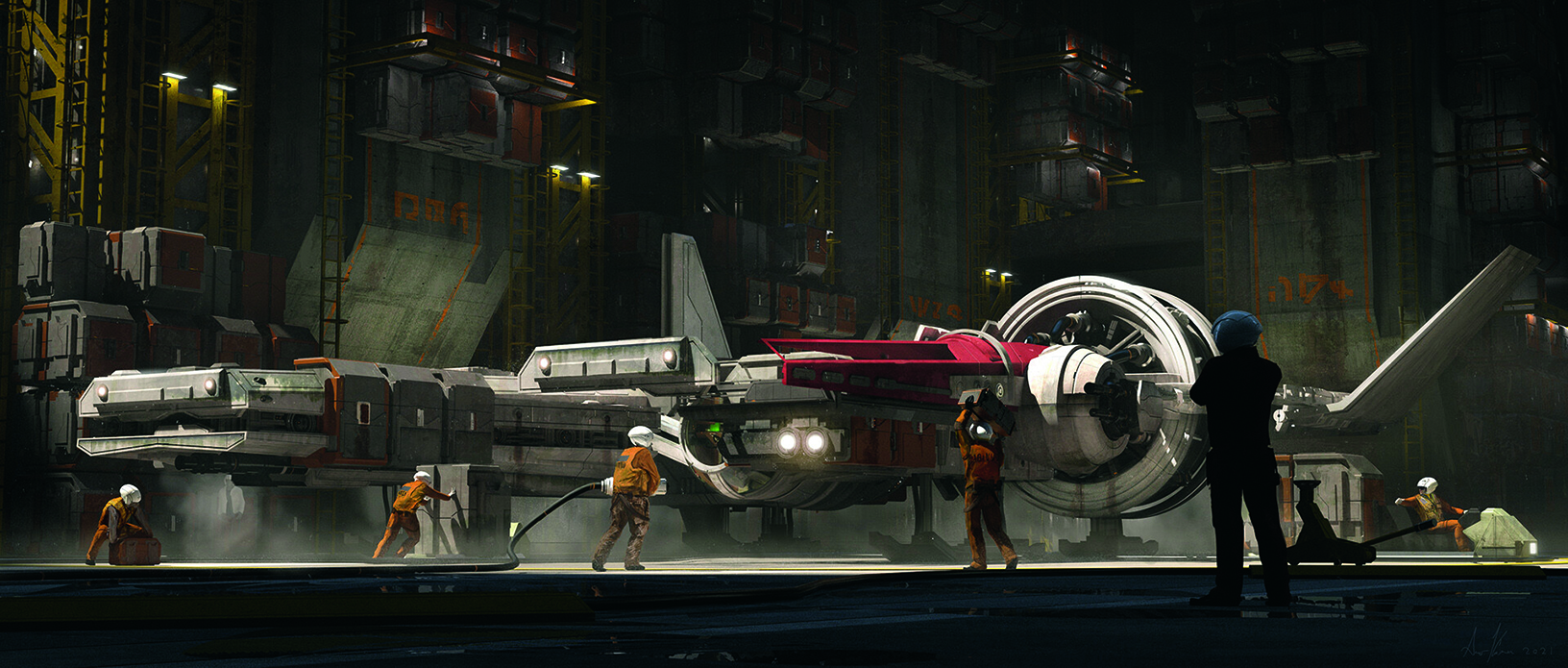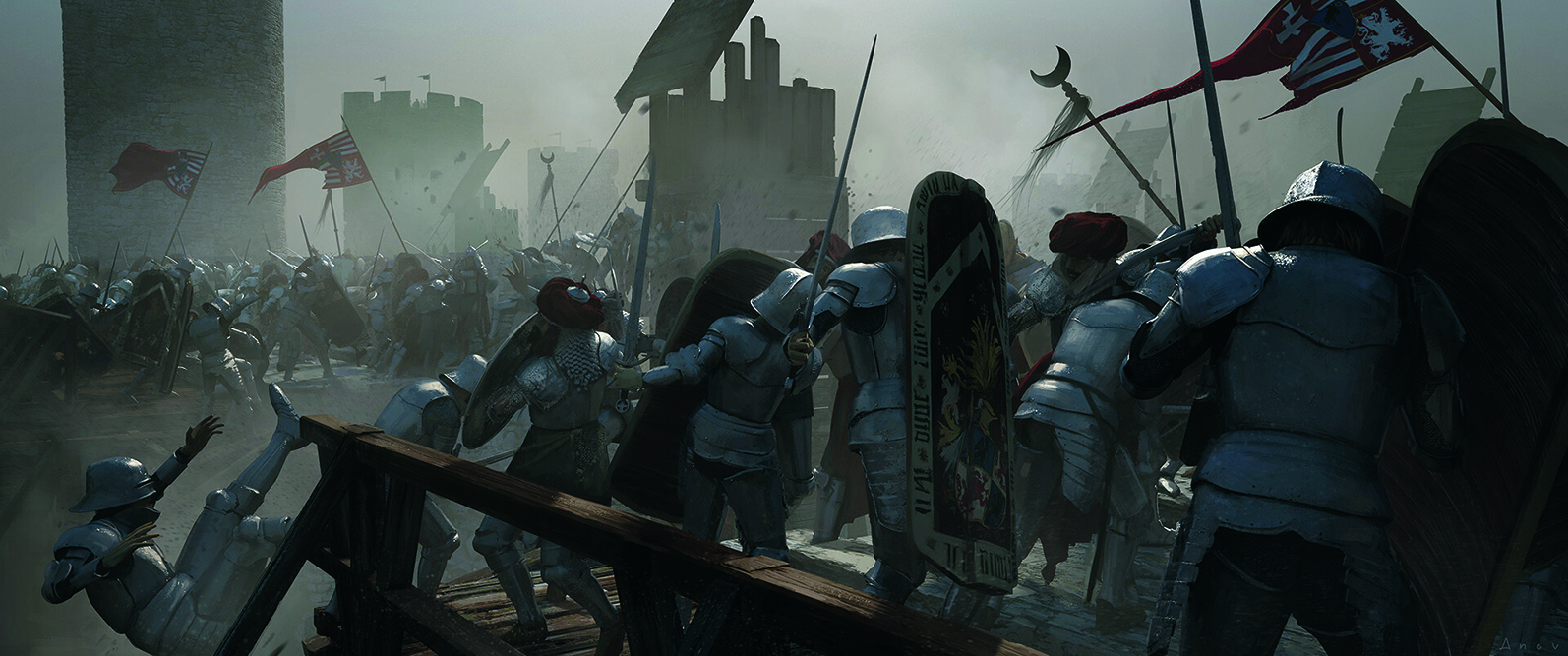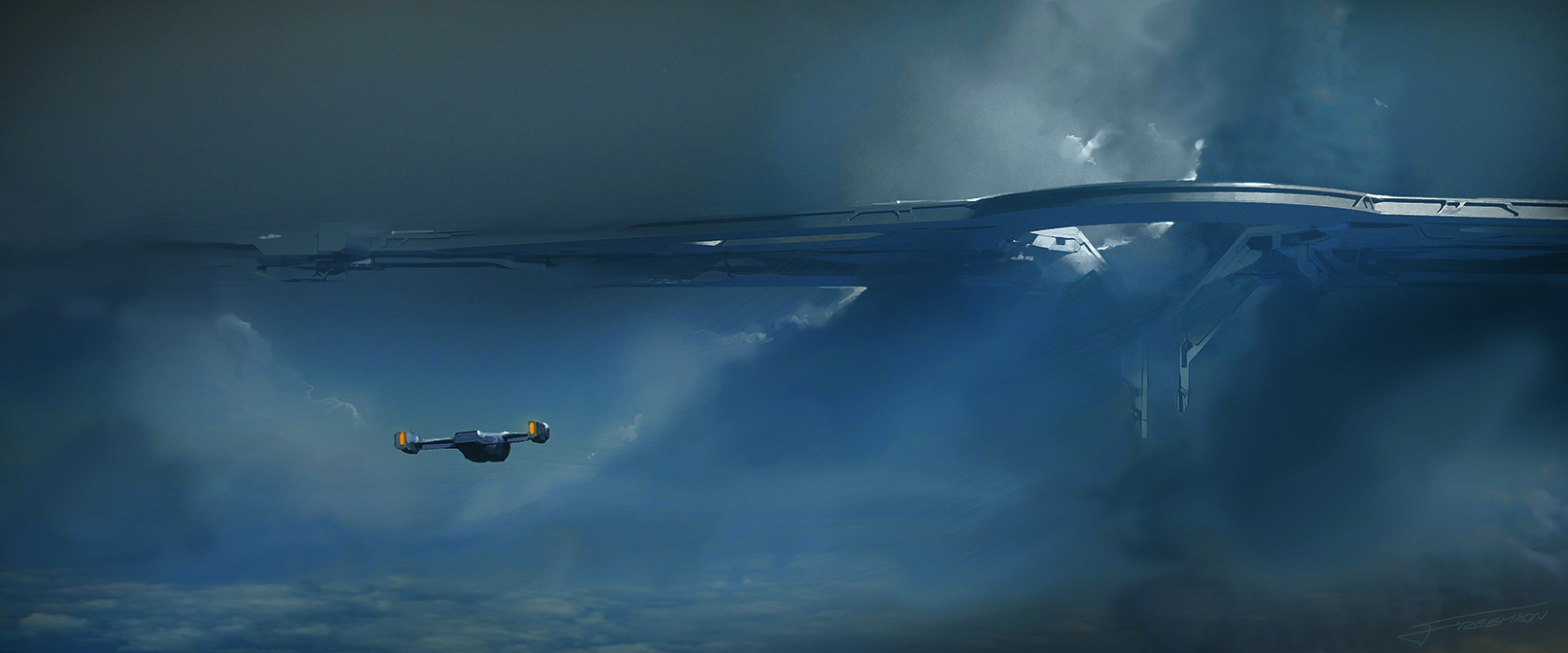The work of a concept artist in the film industry extends far beyond using the best digital art software to dream up fantastical creatures, machines, costumes, and environments. At heart, you’re a storyteller and a problem-solver, whether or not you’re using the best drawing tablets or traditional brushes and 3D art software.
Keith Christensen, a concept artist who worked on both Dune films, The Batman, and Avatar: The Way of Water, tells us he has always had a strong urge to make images that are driven by story: “A landscape is nice, and a landscape with a cabin is better. But the overgrown, burned–out ruins of a cabin with someone – or something – crouching in the shadows: that’s the kind of thing that’s fun for me.”
Best picks for you

A concept for Alien: Covenant by Matt Hatton, who also contributed to Alien: 40 Artists 40 Years, published by Titan Books. (Image credit: Mathew Hatton)Be a problem solver
Beyond conveying narrative, a concept artist’s job is to solve the visual problems presented by a brief. For example, an environment might need to look claustrophobic, but there still has to be room for all the action to take place. A costume might have to tell a story about the character and express their personality, but it also has to be practical for the actor to wear and appropriate for the time period of the film.
Concept artists work within these constraints to produce visual solutions that satisfy the requirements of the filmmaker’s vision. No two sets of constraints will ever be the same, and this is what keeps the job interesting. Every project brings a brand new challenge. Keith tells us he loves this constant change: “There’s always a new problem to solve,” he says.

Keith Christensen says: “I’ve always been into movies and television. I was born in 1974, an amazing time in film history: Star Wars, Indiana Jones, The Goonies, The Dark Crystal, Tron, Conan… the list goes on.” (Image credit: Keith Christensen)
Keith’s advice for breaking into the industry is to identify your strengths and find where they fit. “Try to understand what it is that you specifically have to offer, what sets you apart, and then figure out how that melds with the industry standards and expectations of potential clients. It’s a strange balance to combine the expected with the novel, but that’s ultimately the job. Brace yourself for struggle, chaos and absurdity.”
He adds that a broad range of interests and experiences beyond the art world is useful. “I’ve always been interested in history, anthropology, archaeology, etc. and no matter how obscure the reference, a job will come along that brings it to the surface.”
Matt recommends developing as wide a skill set as you can. “Being able to work in different styles, across different disciplines, and in different departments will give you a better chance at a long career,” he says. Even at the start, you should be building your knowledge of the visual elements of different time periods and types of architecture, as well as your understanding of the art fundamentals that will give you confidence in your abilities as you take on bigger challenges.
Image 1 of 3
 Keith’s designs for Dune’s Harkonnen desert battle costumes. (Image credit: Keith Christensen)
Keith’s designs for Dune’s Harkonnen desert battle costumes. (Image credit: Keith Christensen) “My childhood was spent drawing, painting, sculpting and fabricating things from whatever movie or show I was into at the time,” says Keith.(Image credit: Keith Christensen)
“My childhood was spent drawing, painting, sculpting and fabricating things from whatever movie or show I was into at the time,” says Keith.(Image credit: Keith Christensen) Concept for a Sardaukar warrior, created for Dune: Part One by Keith.(Image credit: Keith Christensen)Understanding core art skills
Concept for a Sardaukar warrior, created for Dune: Part One by Keith.(Image credit: Keith Christensen)Understanding core art skills
Matt explains: “Some people say, ‘I just wanna design monsters’. Well, don’t we all?! But your monsters will be much better if you know anatomy, even if you’re departing from the real stuff. And it will be in context.
“Watch tons of movies, and don’t just look at the visuals but ask yourself, why did they do that? Turn the sound off so you can concentrate on what they’re doing visually if that helps. Martin Scorsese did that. It works.
Don’t miss these
“All this will also help immeasurably, not just to be ready for your first job, but so you can take a brief from your boss. Or be able to understand the director when they use cinematic shorthand to talk about what they want.”

“It’s exciting to adapt to different genres and directors, and to shift the style and dynamics of the images like a chameleon, depending on what the film requires,” says Kamen. (Image credit: Karmen Anev)

Kamen’s render of a 70s-style spaceship. (Image credit: Karmen Anev)
Kamen Anev, another artist who produced concepts for the Dune films, as well as Blade Runner 2049 and Star Wars: Episode IX – The Rise of Skywalker, tells us that, on top of your visual and technical skills, strong communication abilities are also essential. “You need to understand the brief and be able to justify your visual solutions,” he says. “What there’s no time for in this fast-paced industry is misunderstanding or ignoring instructions.”
Like Matt, Kamen emphasises the benefits of immersing yourself in movies. “Perhaps the most important thing of all is a genuine love and knowledge of films, and the ability
to find elements to fall in love with – regardless of the genre or script – so you can stay motivated and do your job with passion,” he says.

“Star Wars and Blade Runner first inspired me to start drawing as a child,” says Kamen Anev. (Image credit: Karmen Anev)
It’s this devotion to the medium that will give you an edge and the ability to create exceptional work. “It’s important to believe in the transformative power of film – to believe that this work can truly improve people’s lives and ways of thinking,” says Kamen. “The key is understanding that filmmaking has always been a collaborative process. Our images only have real value if they help streamline that process, not complicate it. This mindset is something that comes across in a portfolio, and it can often be the difference between success and failure.
“Another important aspect is to build a portfolio that moves comfortably across different film genres, rather than sticking to just one. The profession itself is extremely diverse and increasingly fragmented. Success often depends on being equally at home with environment, prop and character concepts.”

Landing Zone – a personal study by Kamen. (Image credit: Karmen Anev)Practice, practice, practice
David Freeman, an artist whose recent credits include The Creator and A Quiet Place: Day One, echoes this advice to strive for range in your portfolio. Also, he says: “Your portfolio might not be perfect, but employers can spot potential, so don’t be too much of a perfectionist and put off getting
it out there.”
To make it as a concept artist in film, David tells us you’ll need to be so dedicated that you’re willing to spend all your spare time improving your skills – but the rewards are worth it. “Getting to walk around a full-scale set based on the concept model and keyframes that I have worked with
the production designer to create is definitely one of the most amazing experiences,” he says.

A pre-production concept showing an aerial view of Tawaret’s barge from Moon Knight by David Freeman. (Image credit: David Freeman)

Some of David’s work on The Creator; an environmental concept showing Nomad breaking through the clouds. (Image credit: David Freeman)
In terms of formal education, it’s not essential to take a course that leads specifically into the film industry, but
it can be valuable. Antonio Niculae, who’s produced concepts for Poor Things and A Boy Called Christmas, earned his Master’s degree in Production Design at the National Film and Television School in the UK. “During the course, we made a ton of industry contacts, which is one of the most important things in this field, since knowing who to reach out to is crucial for landing work,” he says.
His advice for getting into the business, beyond getting really good at what you do, is to be persistent. “This industry is tough, and there are countless talented concept artists, but there’s room for everyone,” he says. “Keep producing work, keep applying for jobs, network relentlessly, and don’t back down. Sooner or later, one of those contacts will call and say, ‘Come in tomorrow.’ It only takes that one person to give you a chance. Once you’re in, don’t get complacent. Keep doing that extra bit of work, even if it’s just watching a one-minute tutorial online!”

“My advice is simple: get great – really great – at what you love to do,” says Antonio. (Image credit: Antonio Niculae)
Antonio’s determination has led him into a career that surrounds him with fellow artists he loves working with. He explains: “For me, it’s not just what I’m drawing, but who I’m drawing it with. Whether I’m crafting massive sci-fi cities or a tiny 4×4 room with white walls and a single chair, doing it alongside people you respect and enjoy working with makes every day exciting.”
Keith shares the sentiment about his art connecting him to other people. “Getting paid to make art every day is amazing,” he says. “But the best part is the possibility that my work may inspire someone in the way that other artists have inspired me. Dune might be to some people what The Empire Strikes Back was (and is) to me. It’s
the thought that some kid might be suiting up to ride a sandworm in his backyard the same way I trained with Yoda in mine, and I got to participate in that. What a cool feeling.”

“Never stop learning, and do something every day toward the career you want,” says Antonio. (Image credit: Antonio Niculae)
This article originally appeared in ImagineFX. Subscribe to ImagineFX to never miss an issue. Print and digital subscriptions are available.

